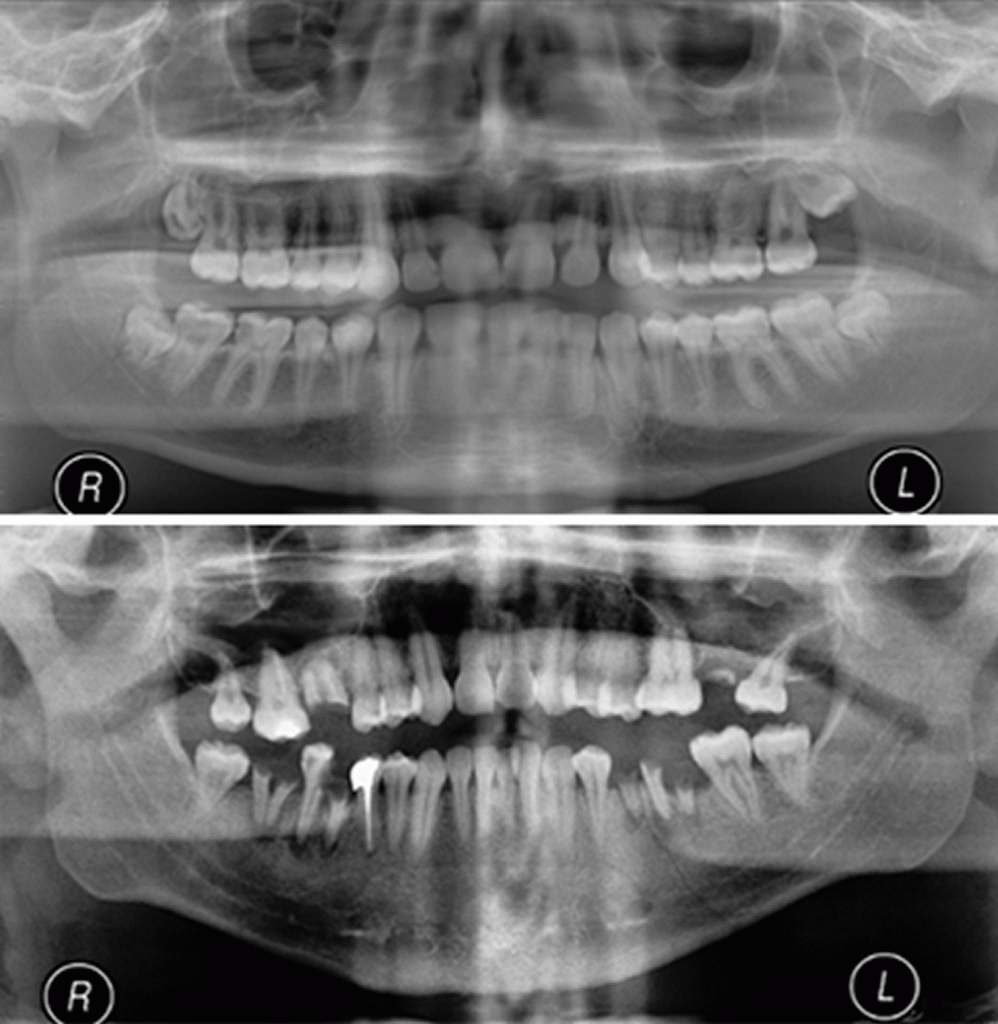Investigations 2

The top image is an OPG showing bilateral undisplaced fractures of the mandible, and the bottom image is an OPG showing an undisplaced fracture on the left side of the body of the mandible. Click on the x-ray to enlarge.
Unfortunately, the OPG requires the patient to be seated and remain still for a period of time. These factors may alter the x-ray technique used in multiple trauma and intoxicated, or uncooperative, patients.
Recent comparisons of standard x-ray techniques with CT scanning have found that a helical CT scan of the mandible offers equivalent sensitivity to an OPG, decreased interpretation error and greater interphysician agreement in the identification of mandibular fractures [13]. Therefore, CT scan is an accurate method of diagnosis if x-rays are technically impossible, or CT scanning is required for other reasons.
A chest x-ray is required in an obtunded patient where a tooth has been avulsed and cannot be located
